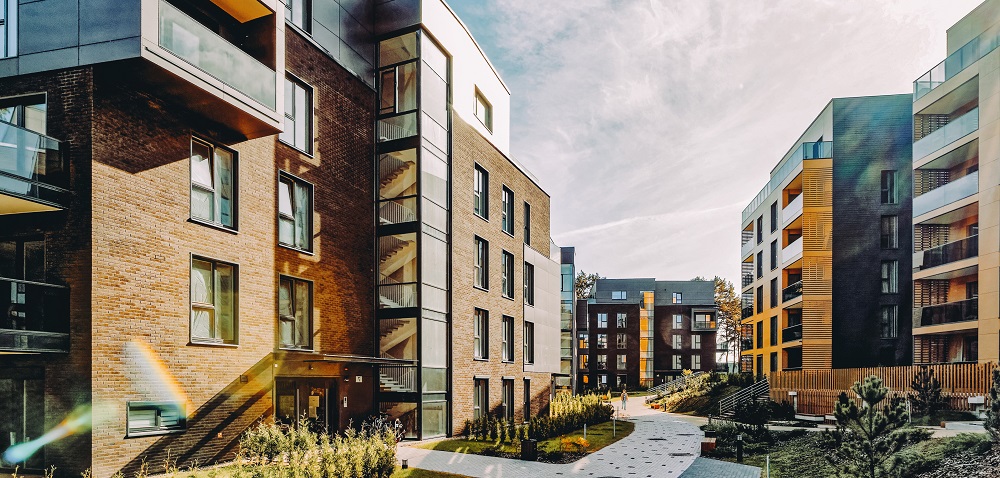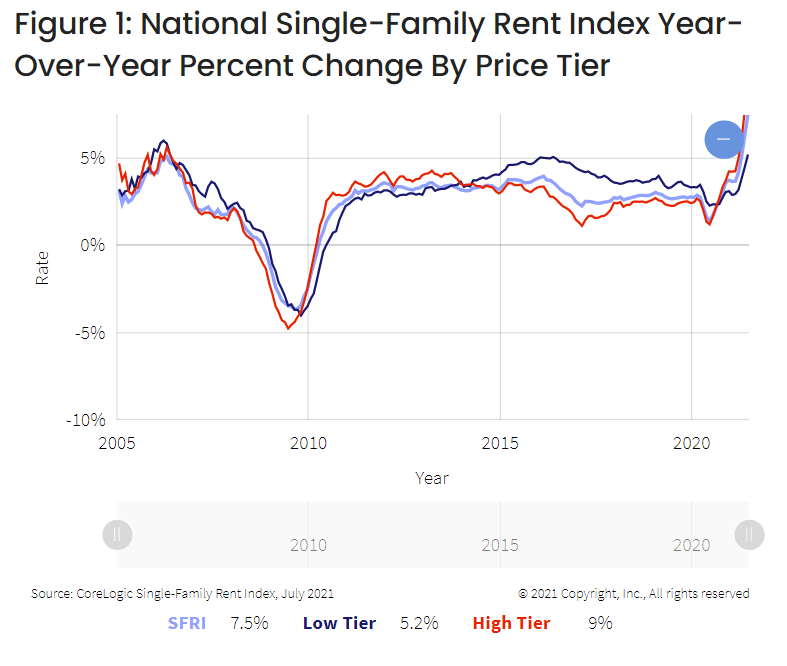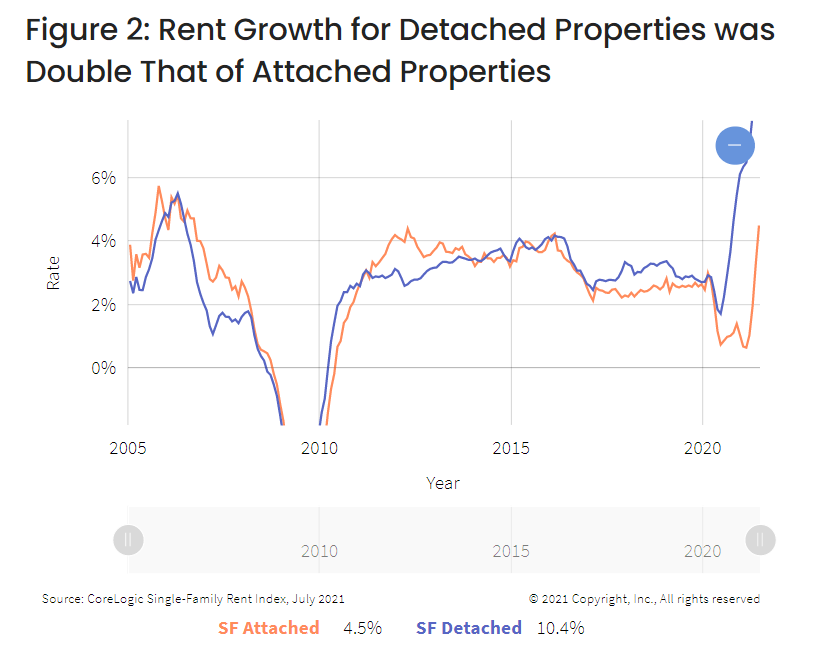
U.S. Single-Family Rents Up 8.5% Year Over Year in July
Overall Single-Family Rent Growth
U.S. single-family rent growth increased 8.5% in July 2021, the fastest year-over-year increase in 16.5 years, according to the CoreLogic Single-Family Rent Index (SFRI). The index measures rent changes among single-family rental homes, including condominiums, using a repeat-rent analysis to measure the same rental properties over time. The July 2021 increase was nearly five times the July 2020 increase, and while the index growth slowed last July, rent growth is running well above pre-pandemic levels when compared with 2019.
Single-Family Rent Growth by Price Tier
An uneven U.S. job recovery, sometimes called a “K-shaped” recovery, is reflected in the rent price growth of the low- and high-price rent tiers, with the increase in lower-priced rentals lagging behind that of higher-priced rentals. The low-price tier is defined as properties with rent prices less than 75% of the region’s median rent, and the high-price tier is defined as properties with rent prices greater than 125% of a region’s median rent (Figure 1).
Rent prices for the low-price tier, increased 5.9% year over year in July 2021, up from 2.4% in July 2020. Meanwhile, high-price rentals increased 9.8% in July 2021, up from a gain of 1.7% in July 2020. This was the fastest increase in low-price rents since April 2006, and the fastest increase in high-price rents in the history of the SFRI.

Single-Family Rent Growth by Property Type
Differences in rent growth by property type emerged after the pandemic as renters sought out standalone properties in lower density areas (Figure 2). The detached property type tier is defined as properties with a free-standing residential building, and the attached property type tier is defined as a single-family dwelling that is attached to other single-family dwellings, which includes duplexes, triplexes, quadplexes, townhouses, row-houses, condos and co-ops.
Detached homes are preferred by would-be homebuyers who have been either priced out of the market or unable to find a home in today’s supply-constrained market, which has pushed rent up for these homes. Annual rent growth for detached rentals was 11.1% in July, compared with just 5.5% for attached rentals.

Metro-Level Results
Figure 3 shows the year-over-year change in the rental index for 20 large metropolitan areas in July 2021. Among the 20 metro areas shown, Phoenix, with an increase of 18.9%, stood out with the highest year-over-year rent growth in July as it has for most of the last three years, followed by Miami (+17%) and Las Vegas, Nevada (+14.3%). Boston was the only one of the 20 metros to experience an annual decline, falling by 0.6% from a year earlier. All 20 metros shown in Figure 3 had higher rent growth than a year earlier.

Single-family rents rose by nearly five times the rate from a year earlier in July 2021. Strong job and income growth, as well as fierce competition for for-sale housing, is fueling demand for single-family rentals. As space and affordability remain top priorities for renters, we can expect to see a similar trend as in the for-sale market — increased migration to less dense and lower cost areas.
To learn more about the data behind this article and what CoreLogic has to offer, visit https://www.corelogic.com/.







Sign up to receive our stories in your inbox.
Data is changing the speed of business. Investors, Corporations, and Governments are buying new, differentiated data to gain visibility make better decisions. Don't fall behind. Let us help.













Sign up to receive our stories in your inbox.
Data is changing the speed of business. Investors, Corporations, and Governments are buying new, differentiated data to gain visibility make better decisions. Don't fall behind. Let us help.





